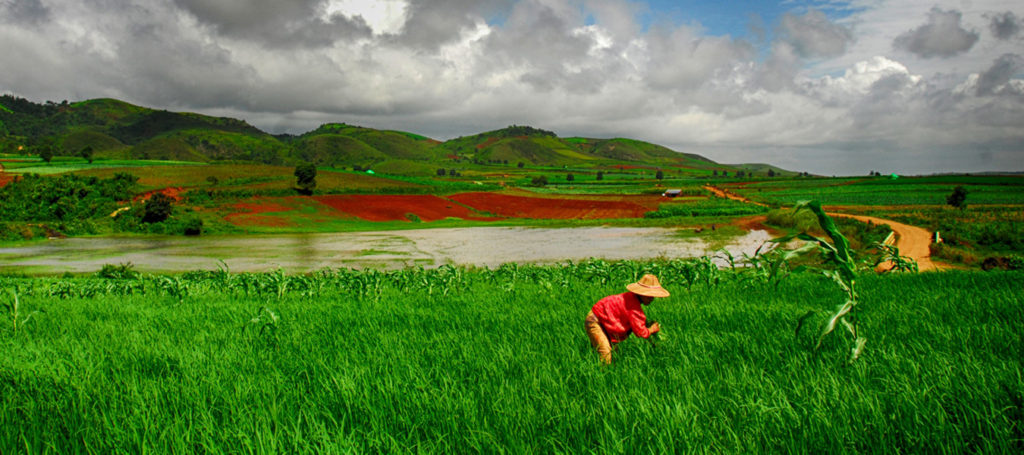Myanmar is well-known as the land of temples and festivals. Every month of the Burmese calendar (Lunar calendar) has its own beauty, its own seasonal festivals which celebrate and pay homage to protect spirits. Like most festivals in Asia countries, Myanmar festivals play a significant role in the culture, customs, and spirituality of Burmese people. Although some of them are large and nationwide, some are small and local-scale, they all symbolize the vibrant life and rich culture of Myanmar.
In this Myanmar travel guide category, you will find out the essential information about the colorful festivals by month through out the country. Keep scrolling and checking out the list of the most popular festivals and get essential tips for Myanmar tour packages in the festival season with our list of sufficient articles below.
January 2020
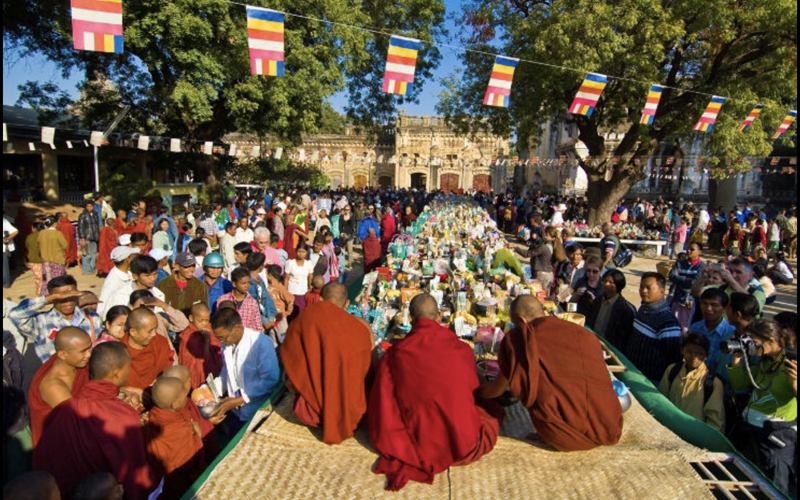
This is the biggest and most important pagoda festival in Central and Upper Myanmar. Villagers come to the festival in their decorated bullock carts and camp on the plain for the duration of the festival. The full moon day of the Myanmar month of Pyatho, which falls on January, marks the height of the celebrations, with one thousand monks from a hundred villages in the vicinity arriving to accept offerings of filled alms bowls. With their crops having recently been harvested, farmers have the time and the money to enjoy themselves.
Timejanuary 2 (Thursday) – 24 (Friday)
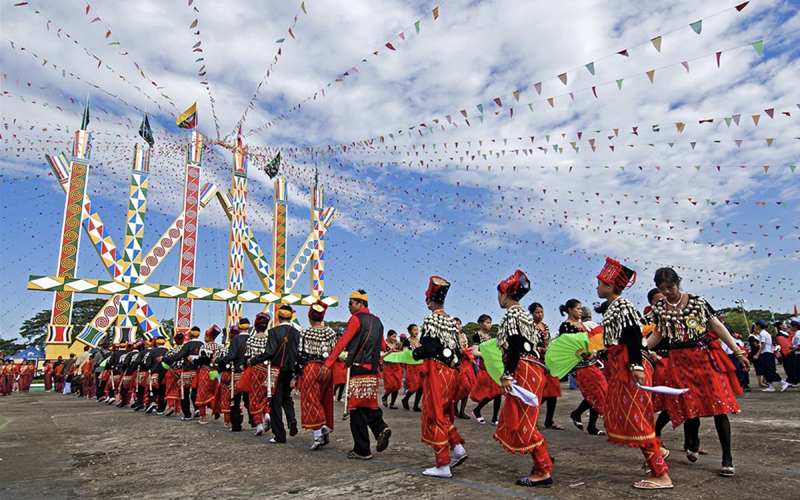
The most popular festival of Kachin ethnic of Myanmar also a new year celebration of Kachin people. Events include like dancing around traditional poles, wearing colourful traditional costumes.
The Manaw festival held in January is the largest and most important annual celebration in Kachin State when people celebrate the new year. People wear their best traditional dress at this time and dance collectively around the tall Manaw poles. The men wear woven shoulder bags and a silver sword in a sheath and women decorate their predominantly red dresses with silver all across the torso. The festival is held in Myitkyina on January.
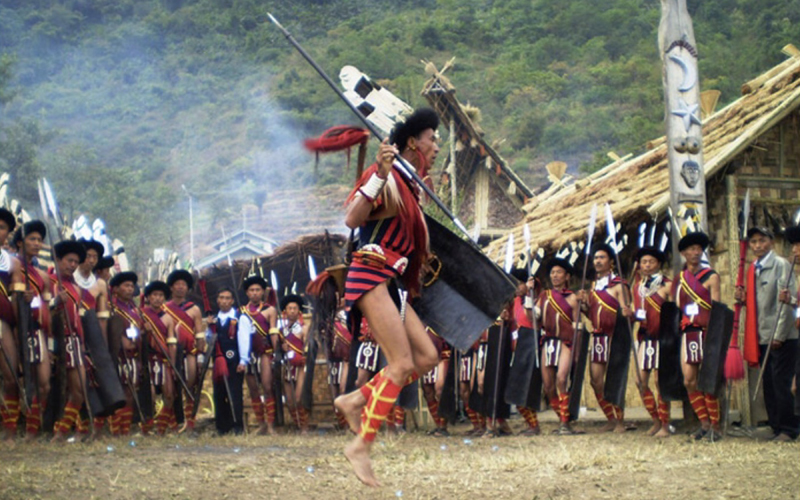
The Naga, one of the over one hundred and fifty different ethnic tribes in Myanmar, lives in the remote area of Northwest Myanmar, Naga celebrates New Year for five days, during the time, they dance, perform, beat their drums, hold the tribal customs until midnight.
There is no stronger demonstration of the diversity of culture than when one sees how many different Naga groups with different costumes, traditions and languages come together in one place.
February
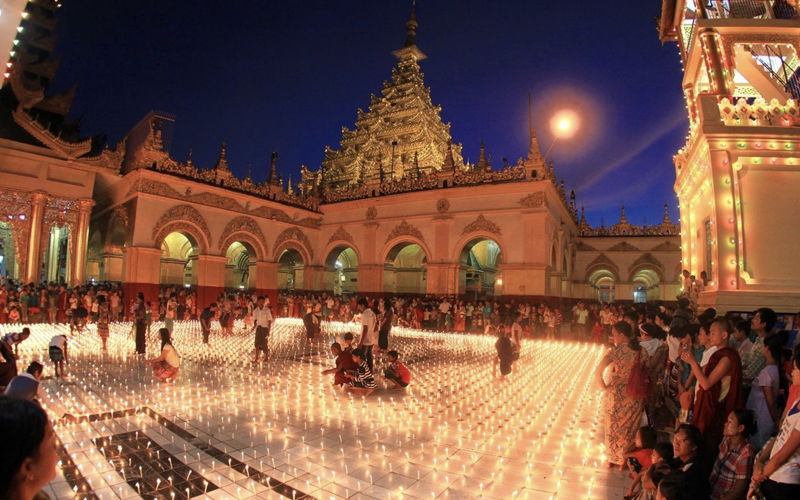
The festival of Mahamuni Pagoda usually last 2 days. It is held on the full moon day of Thabodwe of Burmese calendar. As Mahamuni is one of the most famous pagoda in Myanmar,thousands of Buddhists go there to pay homage. the Maha Muni Pagoda Festival, devotees light bonfires and cook huge pans of sticky rice with ginger, coconut and sesame to offer to monks. In other parts of the country, this sticky rice is cooked as a celebration of the harvest and distributed within communities. In the evening, you can observe several kinds of entertainment such as Zat, Anyeint and popular movies in the open air. In the daytime, there are many stalls selling various kinds of Myanmar snack and other Myanmar products.
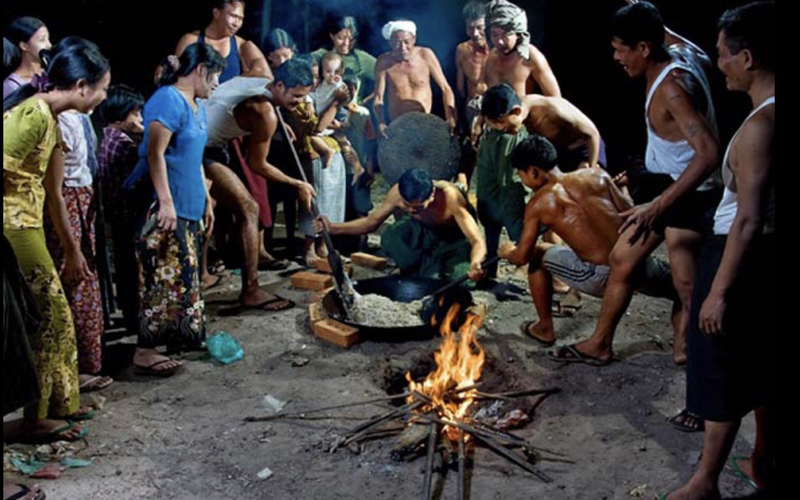
Htamane Festival is a competition between teams of men for the donation of Glutinous Rice to the Lord Buddha and Buddhist monks in the early morning on Full Moon Day. During the festival, cook giant pans of glutinous rice with ginger, coconut, peanuts and lots of sesame, which wrapped in banana leaves and given to neighbours and friends.
March
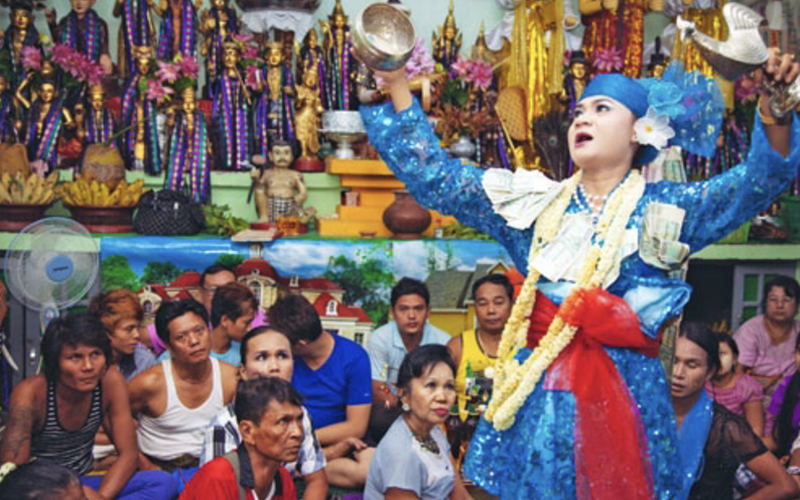
This festival takes place in Pa Khan, Yayzagyo township, Magwe division. It is a festival for Nat worshipers who worship Ko Gyi Kyaw Nat a happy spirit who loves to drink and gamble. The attended people sing and dance happily. The event is held in his hometown, Pa Khan, Yayzagyo township.
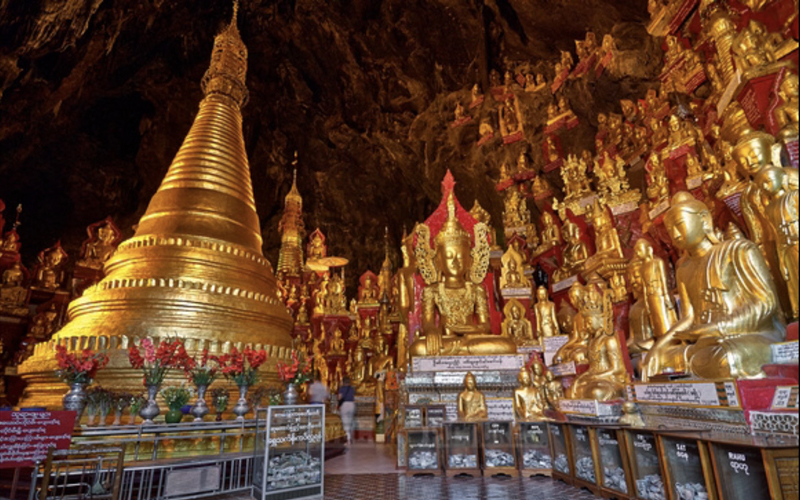
Many stalls selling delicious local food, Shan handicrafts, cheroots, Shan umbrella etc.., joining Shan tribes in their colourful costumes.
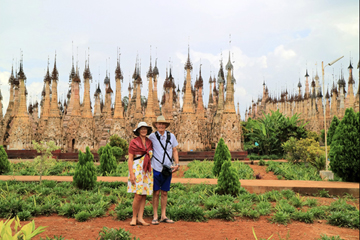
There are more than 2000 pagodas from several centuries ago in the complex. Pa-O, Shan and Danu national races come to celebrate this festival.
April
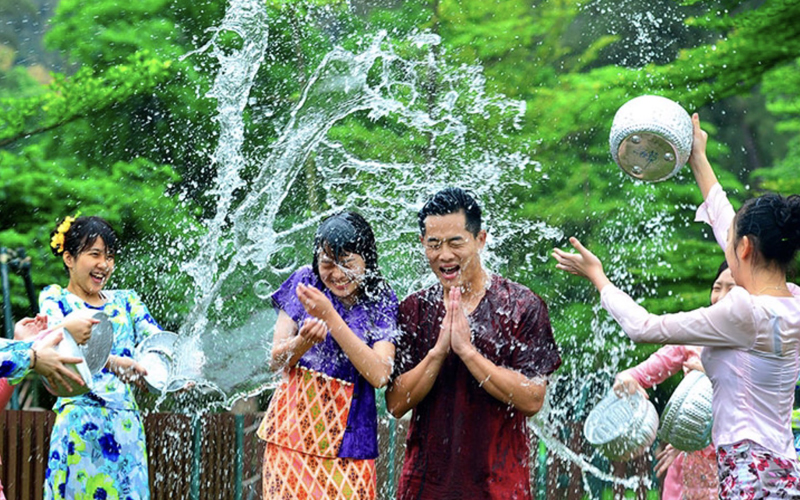
Thingyan is Burmese new year festival usually falls around mid-April, the Burmese month of Tagu. The water festival is held all over the country in a belief of cleansing away the evil deeds in the past year with water.
May
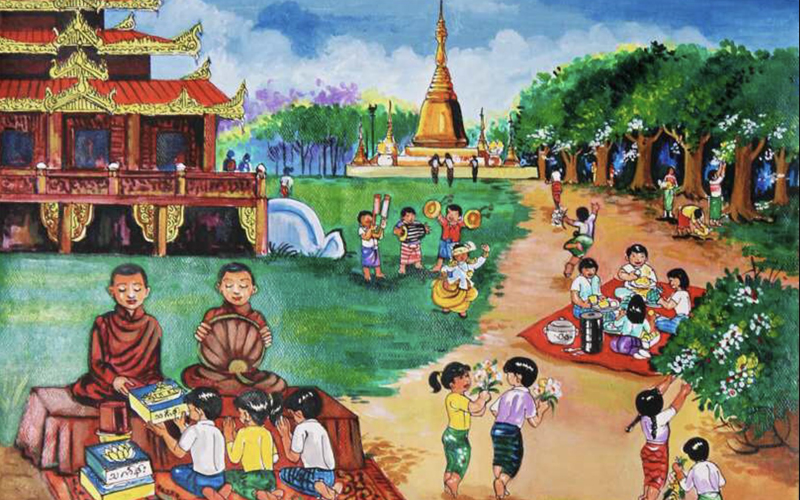
Kason (May) is the second month in Myanmar calendar and it is the hottest month of the summer, drying up water in lakes, ponds, streams, rivers. “Bodhi” is a Pali word meaning “knowing” or “perceiving”. devotees regard such trees and forests as sacred and they respect them. Pilgrims pour water on the Bodhi trees which Buddha gained enlightenment under that kind of tree.
June
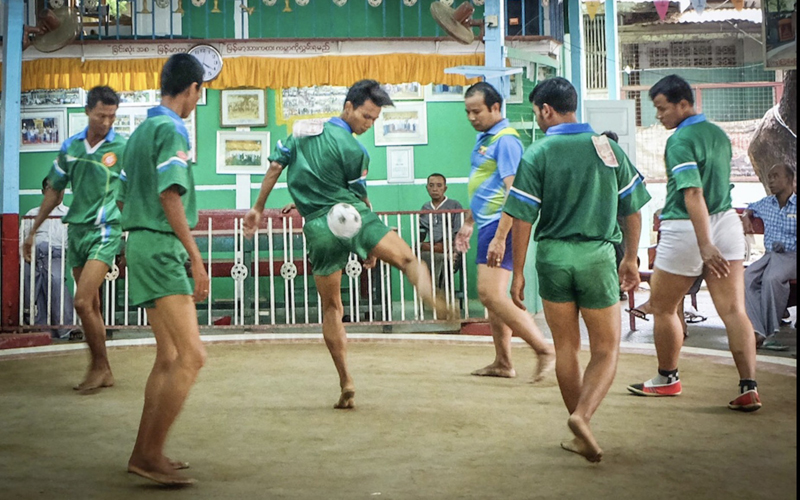
Chin Lone (cane ball) tournament held in Mahamuni Pagoda compound almost a month for every day and night. Cane ball players from all over the country come up to Mandalay to enjoy this festival. We can enjoy to see several ways of playing Chinlon and racing by either team or individual with local folk music. Actually it begins about a month before the ending date but the last week displays the skill of the best teams.
July
Waso is the fourth Myanmar month. It is part summer and part monsoon.
The full-moon day of Waso is significant as the day the embryo-Buddha was conceived, the day Buddha preached the first sermon of Dhamma Cakka, the day He performed the miracles. It is a time of ordination and novitiation into the religious order, with these events held since the days of ancient Myanmar monarchs for the flourishing of the Sasana. There is also a practice of young men and women going on outings of gathering flowers to be offered at Buddha images. A significant practice of Waso is the offering of monk’s robes to members of the Sangha for use during the Lent and so these robes are called Waso robes. Likewise there are also big candles called Waso candles offered at this time of the year. Among lay people it is also a time to offer elders cakes,fruits and other offertories.
In some years, there are two full moons in the month of Waso. The main festivals are celebrated around the second Waso fullmoon which falls in July. This festival commemorates the time when the Buddha gave His first sermon to five monks. Pilgrims throughout the country gather wild flowers to offer at pagodas, and offer new robes to monks. The Buddhist Lend period is from the full moon of Waso until the fullmoon of Thadingyut.
August
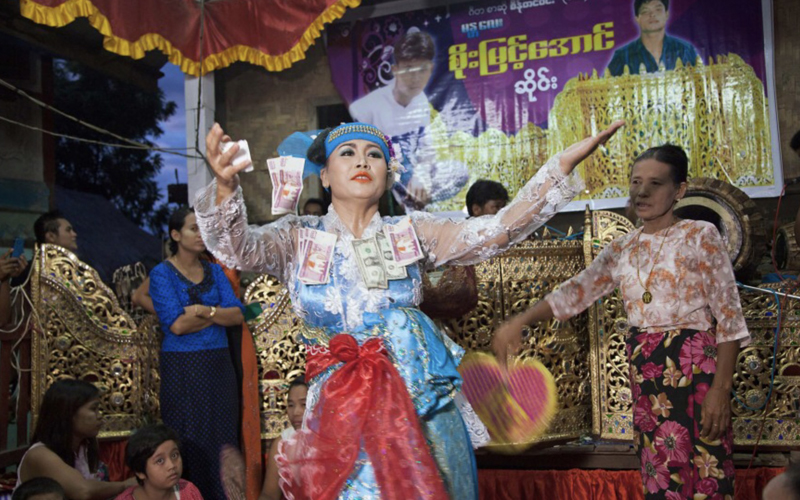
his festival is a regional Nat festival, keepers of the Ayeyarwaddy River. After harvest time, hundreds of farmers, wearing colourful dresses, arrive with their beautifully decorated bullock carts at the Myatheindan Pagoda. They build a big tent as temporary housing for the nat images. During these days the mediums perform Nat Dances in order to be granted a good harvest for the next season and to the delight of hundreds of spectators. Can observe several kinds of ceramic wares from Sagaing and Kyaukmyaung are laid out at the bank of the river for sale during the festival.
Taung Phyon Nat Festival
This festival is known as a major gathering spot for spiritual mediums. Hundreds of believers and mediums (natkadaw) come once a year to Taung Byone. It is the most impressive Nat festival in Myanmar.
Taung Pyone is the site where two brother serving a king of Bagan in the 11th century were executed. They became powerful spirits or Nat. This festival in their honor is attended by tens of thousands of mediums and worshipers. A ritual is celebrated each day. Toddy palm wine, whisky, rum, grilled rabbit and fried chicken are offered to the two spirit brothers. Orchestras come to play for the mediums who dance to make the spirits joyful.
Myanmar is a land of festivals. They reflect the cultural diversity of the country’s many ethnic groups. The Taung Pyone festival this month is a colorful event celebrating the traditions and beliefs of the Myanmar people and paying tribute to the venerated nats, or spirits. Myanmar people believe that nats can bring good omens, foresee the future and provide guidance. Taung Pyone, which dates back to the Bagan period and is one of Myanmar’s biggest festivals, draws hordes of visitors who believe nats from all over the country come to enjoy the celebrations.
The most important spirit or nat festival is the Taung Pyone Festival held in August or September each year. This ancient village near Mandalay was where the two brothers Min Gyi and Min Galay were unfairly executed so it is their main shrine. Eleven days of rituals are conducted by officials. Dressed in silks and stins, and made up as if for traditional dance performance, spirit mediums dance while being possessed, and the spirit in them ‘eats’ the food offered by smelling, although with drinks such as whisky they can drink up the whole bottle in several swallows without the medium getting drunk. A traditional orchestra of a drum circle, oboe, cymbals, brass gongs and the big drum accompanies the dances with music especially composed for the spirits. Mediums dance and sing while cash notes are pined to the medium’s jacket by the donors and more tossed to the musicians and spectors.
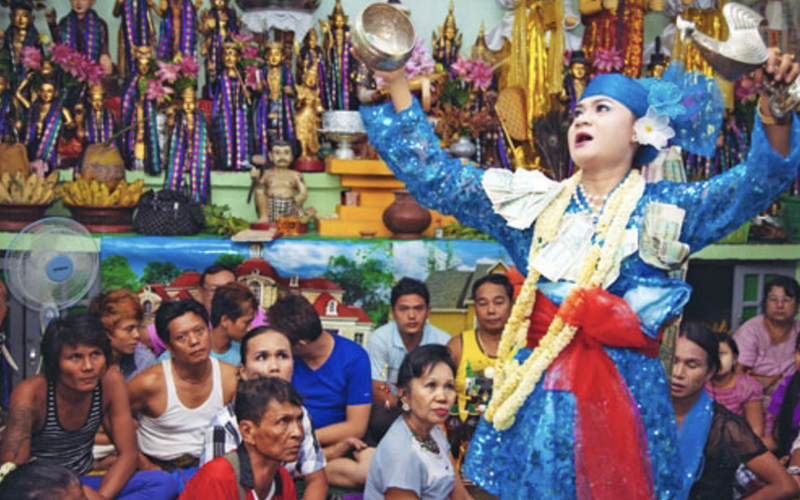
The Yadana Gu Nat Festival is also known as Mother of Taung Byone festival. One of the reasons why this event is enjoyable is the necessity of travelling to the festival site by boat. The festival is held each year to honour Medaw (Mother of the two Lords), Mewanna.
This event is held immediately after the Taung Byone festival, near Mandalay, wich attracts thousands of mediums and devotees who pay homage to the power of nats. Every year, the festival starts on the 10 days after full moon day of the Myanmar month of Wagaung and lasts about five days.
The Yadana Gu Pagoda festival and Yadana Gu Nat festival are held simultaneously. During the festivals, boats carrying offerings and filled with dancers and musicians perform in homage to the nats ply the Ayeyarwady River near Mandalay and Amarapura. Most of the pilgrims are from Mandalay, Amarapura, Tada Oo, Sagaing and Monywa.
This one is known as mother of Taung Byone. Most enjoyable festival because of the rowing boat trip to the site. The festival is held annually in honor of Mt.Popa.
This festival honours the mother of the two spirit brothers reffered to above. She is the Goddess of Popa and her main shrine is on Popa Crest, near Bagan. She too is a powerful spirit and protector of women.
September & October
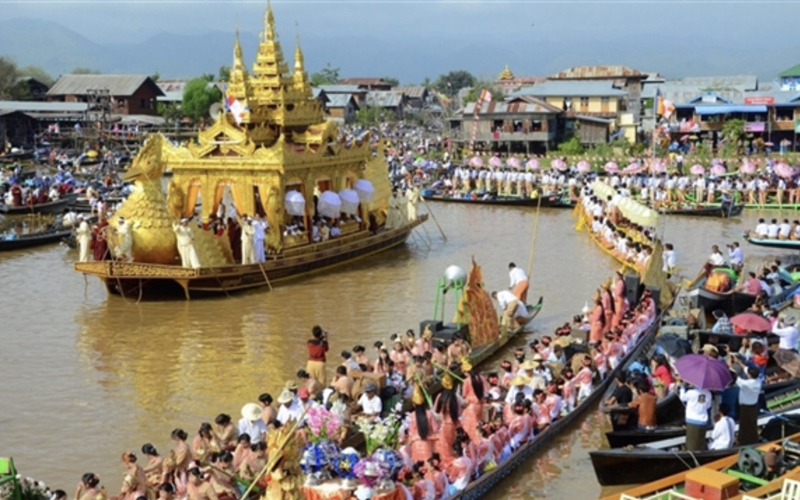
Four of the Hpaung Daw Oo Pagoda’s five Buddha images are carried on a golden barge to spend the night at villages around Inle Lake. Their arrival at the villages is greeted with ceremonies and rejoicing. Thousands of people from communities around the lake and villages in the surrounding mountains carry offerings of fruit and flowers on lacquer trays in boats and pay homage as the holy barge passes. Teams of the lake’s famous leg-rowers compete in annual boat races and it is the one and only place in the world.
One significant of its festivities is the procession of four Buddha images, flanked and followed by more than two dozen longboats that are paddled by literally hundreds of boatmen around the Inle Lake, a large area of freshwater popular with local travelers as well as those from many foreign countries.
The festivities take 18 days, beginning of end of September and wrapping them up in early October. Most of the year, the images together with the fifth one are enshrined at the Phaung Daw Oo pagoda or temple in Nyaung Shwe township, Taunggyi District. During the procession, the four images deformed with heavy applies of gold leaves over by devotees stop each and every village in and along the Lake’s shores in order to allow villagers to pay homage to.
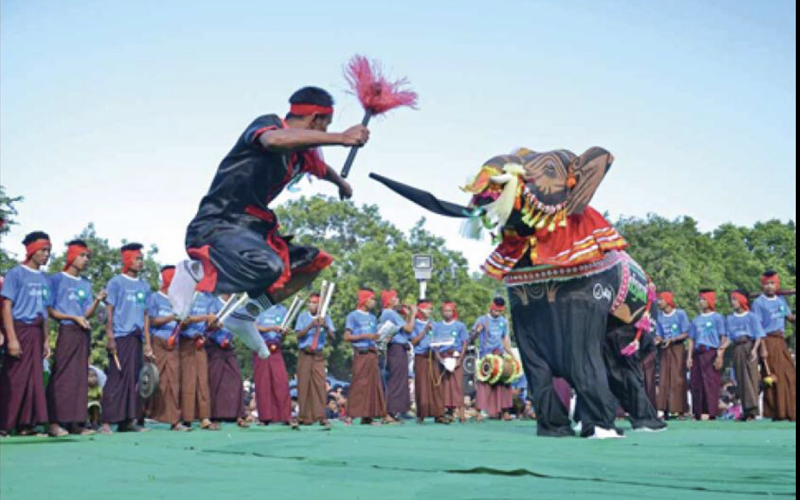
Dancing Elephant Festival is one of the famous festivals in Myanmar. It is held in Kyaukse surrounded by paddy fields and 30 miles (50 km) to the south of Mandalay. Elephant dance competition is celebrated at annual Light Festival on full moon day of Thadingyut mostly in October. Competition of decorated cloth elephant dancing with two men inside, giving the gold prize to the winner.
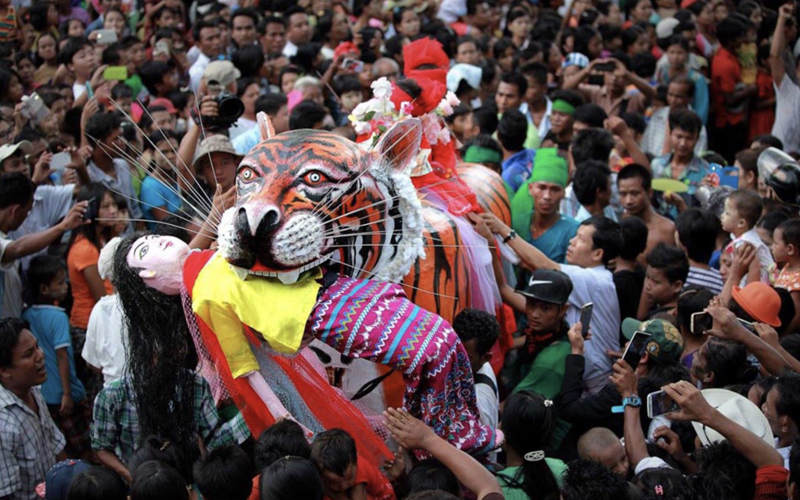
Manuha pagoda festival is one of the famous festivals in Bagan. The festival is held annually one day before the Full Moon Day of Tawtalin. The Myinkaba region dwellers donate rice cakes and pickled winter melon to the visitors during the festival.
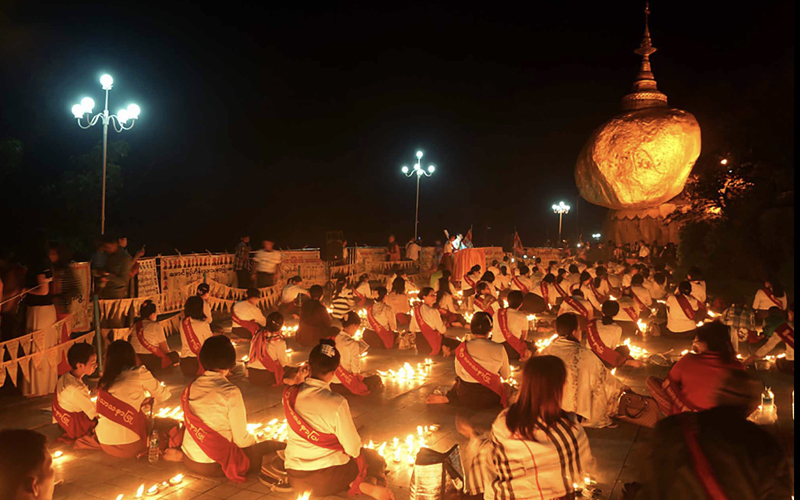
On the platform of the Kyalk-hti-yo ‘Golden Rock’ Pagoda devotees light nine thousand lamps to welcome the New Year and to give thanks to Buddha’s peaceful philosophy. The magical Golden Rock Pagoda, a golden spire, sits on top a huge boulder covered with gold leaf and perched on the edge of cliff.
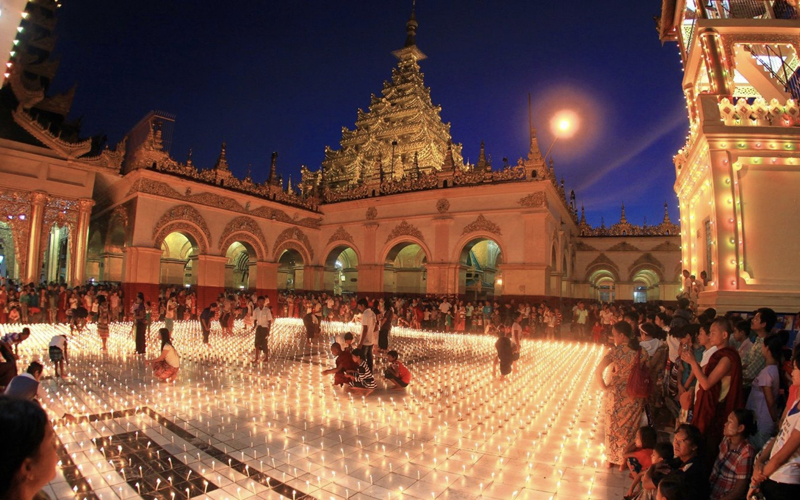
November
Hot-air balloon festival is held one week before the full-moon day of Tazaungmone. This festival is very well-known as one of the most famous festival in country.During the festival, giant hot air balloons of various colors and shapes are sent up to the sky. Young people of Taunggyi of crazy about competing in the festival.
Teams from various towns and villages make balloons out of cloth and paper in the shape of birds or animals for the daytime competitions, and those decorated with tails of small paper lanterns for night. Before setting them off, the teams carry their balloon around town to show off with dance and music. On the night of the full-moon the townsfolk parade around town carrying lanterns and offerings to be placed at the pagoda.
Also known as Tazaungdaing Fire Balloon Festival, the daytime competitions are for balloons made in animal or bird shapes and at night fire balloons are decorated with strings of lanterns or designs made of lights. The balloons have a bamboo frame over which hand-made paper is glued. The hot air is generated by burning rags under the opening. Balloons are judged for size, style, design and the time they remain aloft. On the night of the full-moon Taunggyi townsfolk hold a parade around the town carrying colorful lanterns.
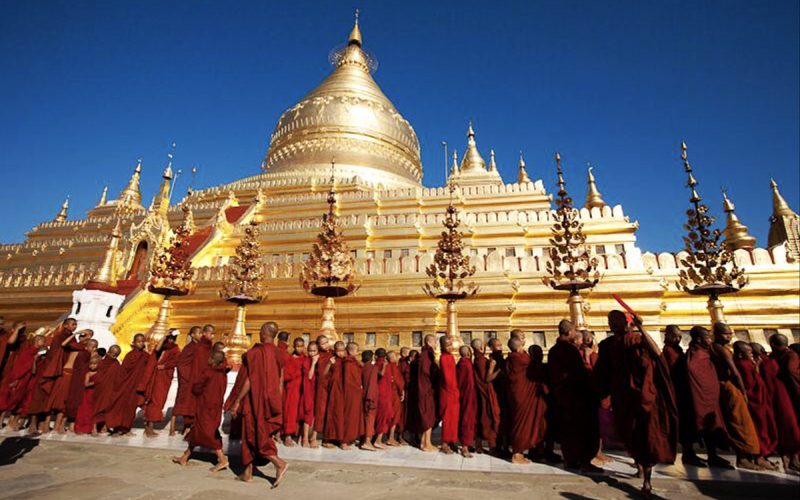
Yearly festival of shwezigon pagoda is celebrated on the fullmoon day of Tazaungmone and it is one of the most famous and liveliest pagoda festivals in Bagan. The festival has been held since the Bagan dynasty. On the full moon day, there is a ritual of offering a filled alms bowl to a thousand and more monks and novices. Lacquerware, glazed pots and hand woven cotton blankets are sold by villagers living in the region at this great country fair.
Robe Weaving (mathoe thingun) Contests in Yangon
In offering robes to the Monks, there is no restriction on when robes should be offered but Mathoe Robe has a special significance. Mathoe robe means the weaving of the robe must be completed and must be offered to the Buddha before dawn. It becomes an unsuccessful work if the weaving of the robes is delayed. Story is that the Buddha would soon renunciate, the Buddha’s mother, Maya, who had been reborn in the Tavatimsa heaven, spent the entire night weaving yellow monk robes for Buddha. Gotami sister of Maya (Buddha’s aunt) continued this tradition and offered new robes annually. In this way robes weaving contests are celebrating in all over Myanmar. During these competitions, contestants work nonstop from night until dawn to weave these garments.
The most significant Mathoe robes weaving contests in Myanmar is the one which celebrated on the Great Shwedagon Pagoda in Yangon. Around nine teams of 60 religious associations of the Shwedagon Pagoda usually join in the contests in the evening of the eve of the the full moon day of month Tazaungmone. Each contesting team has six members including the team leader. When the contests stop at 10 P.M, the team which can finish earliest and which can weave the best quality is chosen by judges as the winner and are given the prizes. This ceremony is not only portrays good deeds of Myanmar people but also encourage the act of traditional weaving.

